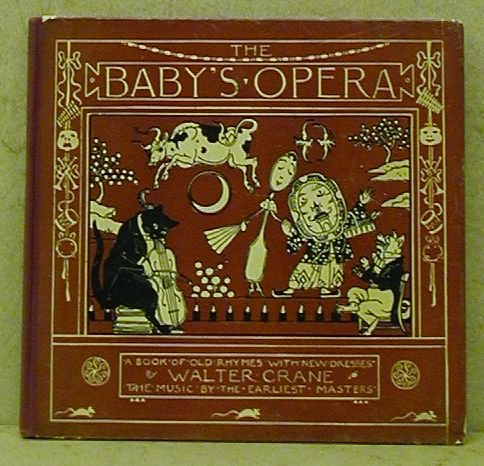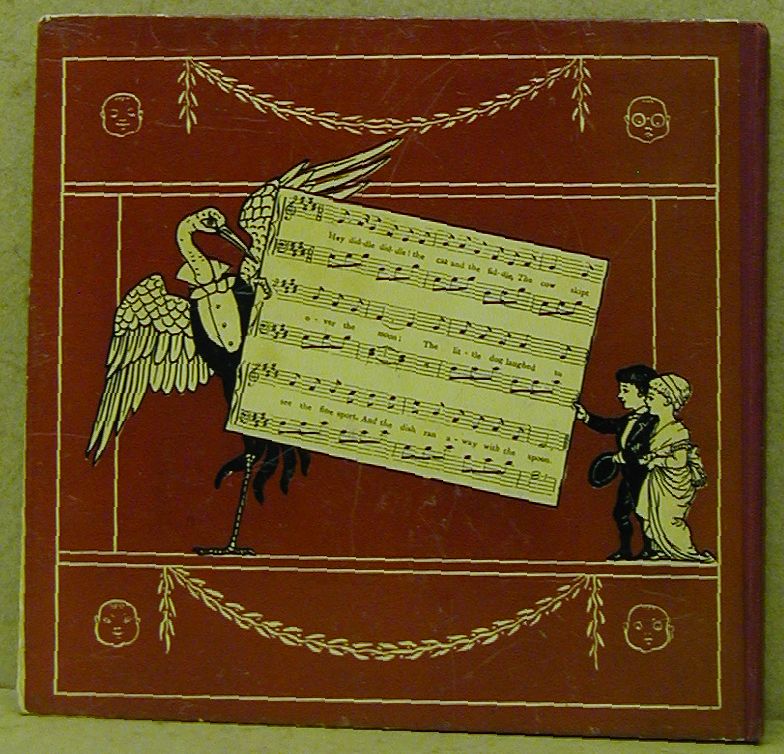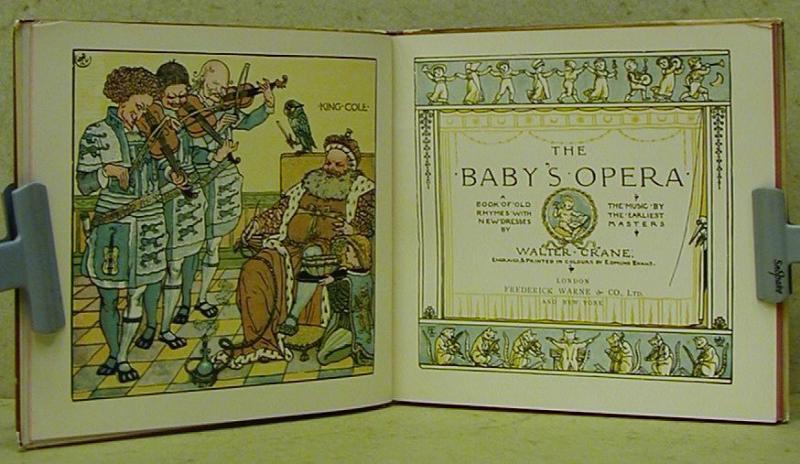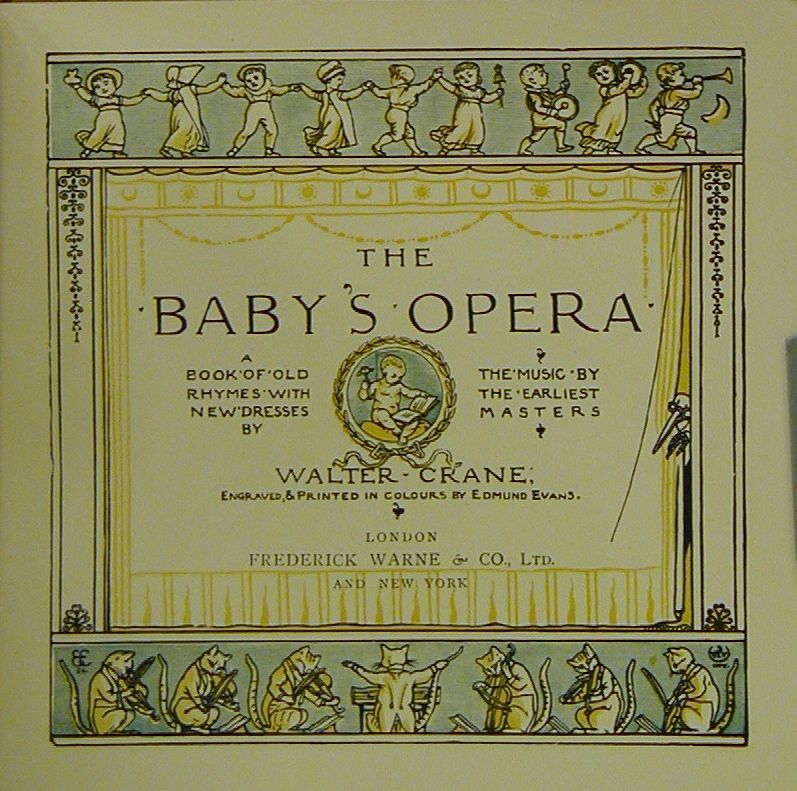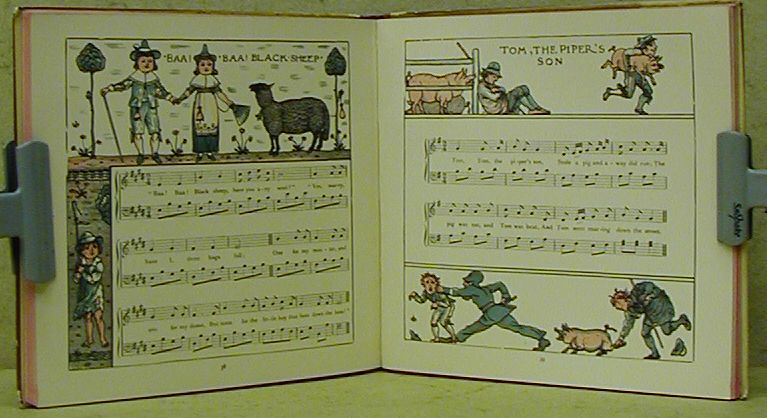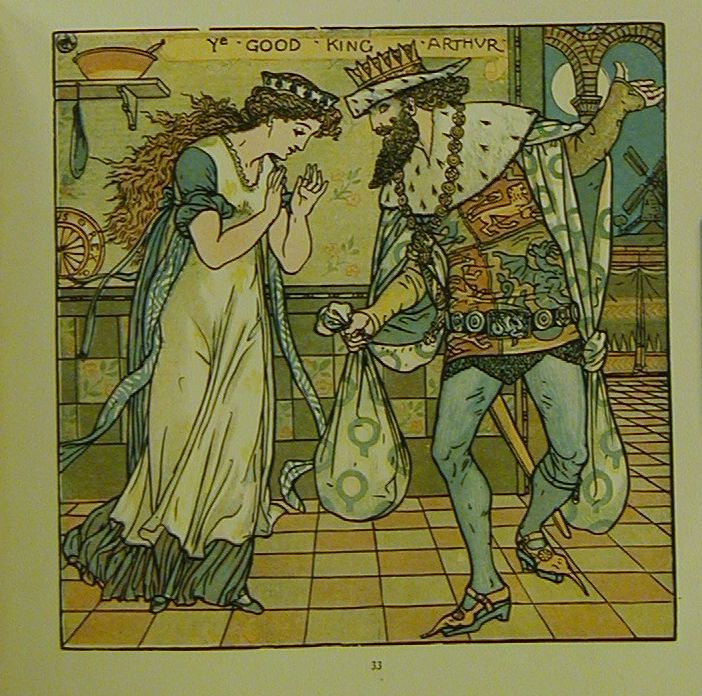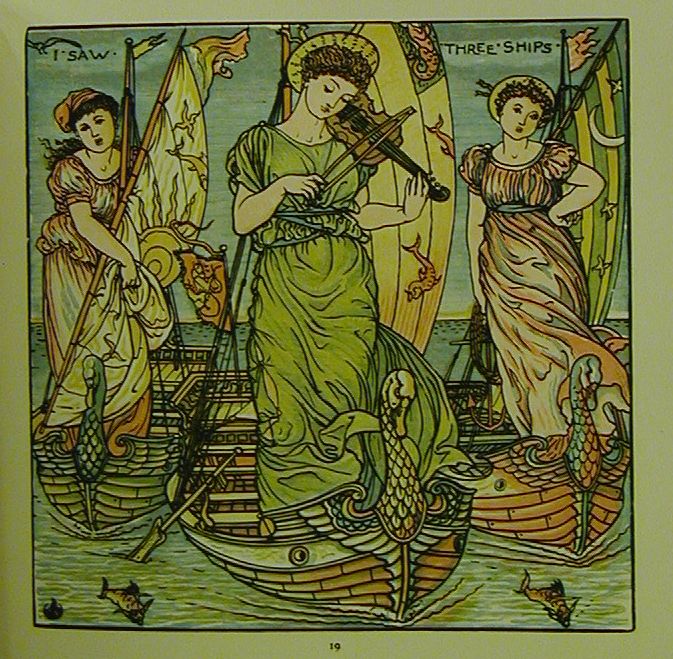ko3417.
book/
tale, children booksCrane, Walter: The Baby's Opera. A book of old rhymes with new dresses. The music by the earliest masters.
London.New York. Ca. 1890. Frederick Warne. 56 p. illustrated. half cloth binding. English language.
size: 18x19 cm.
SOLD
Walter Crane
(August 15, 1845 - March 14, 1915) was an English artist. Born in Liverpool, he was part of the Arts and Crafts movement. He produced paintings, illustrations, children's books, ceramic tiles and other decorative arts.
Walter Crane was the second son of Thomas Crane, portrait painter and miniaturist. He early came under the influence of the Pre-Raphaelite Brotherhood, and was a diligent student of John Ruskin. A set of coloured page designs to illustrate Tennyson's "Lady of Shalott" gained the approval of wood-engraver William James Linton to whom Walter Crane was apprenticed for three years (1859-1862). As a wood-engraver he had abundant opportunity for the minute study of the contemporary artists whose work passed through his hands, of Dante Gabriel Rossetti, John Everett Millais, Sir John Tenniel and Frederick Sandys, and of the masters of the Italian Renaissance, but he was more influenced by the Elgin marbles in the British Museum. A further and important element in the development of his talent was the study of Japanese colour-prints, the methods of which he imitated in a series of toy-books, which started a new fashion.
In 1862 his picture "The Lady of Shalott" was exhibited at the Royal Academy, but the Academy steadily refused his maturer work; and after the opening of the Grosvenor Gallery in 1877 he ceased to send pictures to Burlington House. In 1864 he began to illustrate a series of sixpenny toy-books of nursery rhymes in three colours for Edmund Evans. He was allowed more freedom in a series beginning with The Frog Prince (1874) which showed markedly the influence of Japanese art, and of long visit to Italy following on his marriage in 1871.
The Frog Asks To Be Allowed To Enter The Castle - Illustration For The Frog Prince, 1874
The Baby's Opera was a book of English nursery songs planned in 1877 with Evans, and a third series of children's books with the collective title Romance of the Three R's, provided a regular course of instruction in art for the nursery. In his early "Lady of Shalott" the artist had shown his preoccupation with unity of design in book illustration by printing in the words of the poem himself, in the view that this union of the calligrapher's and the decorator's art was one secret of the beauty of the old illuminated books.
He followed the same course in The First of May: A Fairy Masque by his friend John Wise, text and decoration being in this case reproduced by photogravure. The Goose Girl illustration taken from his beautiful Household Stories from Grimm (1882) was reproduced in tapestry by William Morris.
Flora's Feast, A Masque of Flowers had lithographic reproductions of Crane's line drawings washed in with water colour; he also decorated in colour The Wonder Book of Nathaniel Hawthorne, and Margaret Deland's Old Garden. In 1894 he collaborated with William Morris in the page decoration of The Story of the Glittering Plain, published at the Kelmscott Press, which was executed in the style of 16th century Italian and German woodcuts. Crane also illustrated editions of Edmund Spenser's Faerie Queene (12 pts., 1894-1896) and The Shepheard's Calendar.
Crane wrote and illustrated three books of poetry, Queen Summer (1891), Renascence (1891), and The Sirens Three (1886).
Socialism
In the early 1880s under Morris's influence, Crane was closely associated with the Socialist movement. He did as much as Morris himself to bring art into the daily life of all classes. With this object in view he devoted much attention to designs for textiles, for wallpapers, and to house decoration; but he also used his art for the direct advancement of the Socialist cause. For a long time he provided the weekly cartoons for the Socialist organs Justice and The Commonweal. Many of these were collected as Cartoons for the Cause. He devoted much time and energy to the work of the Art Workers' Guild, and to the Arts and Crafts Exhibition Society, founded by him in 1888.
Mature work
His own easel pictures, chiefly allegorical in subject, among them "The Bridge of Life" (1884) and "The Mower" (1891), were exhibited regularly at the Grosvenor Gallery and later at the New Gallery. "Neptune's Horses," was exhibited at the New Gallery in 1893, and with it may be classed his "Rainbow and the Wave."
His varied work includes examples of plaster relief, tiles, stained glass, pottery, wallpaper and textile designs, in all of which he applied the principle that in purely decorative design "the artist works freest and best without direct reference to nature, and should have learned the forms he makes use of by heart." An exhibition of his work of different kinds was held at the Fine Art Society's galleries n Bond Street in 1891, and taken over to the United States in the same year by the artist himself. It was afterwards exhibited in the Germany, Austria and Scandinavia.
Crane became an associate of the Water Colour Society in 1888; he was an examiner of the science and art department at the South Kensington Museum (now the Victoria & Albert Museum; director of design at the Manchester Municipal school (1894); art director of Reading College (1896); and in 1898 for a short time principal of the Royal College of Art. His lectures at Manchester were published with illustrated drawings as The Bases of Design (1898) and Line and Form (1900). The Decorative Illustration of Books, Old and New (2nd ed., London and New York, 1900) is a further contribution to theory. A well-known portrait of Crane by George Frederick Watts was exhibited at the New Gallery in 1893
Irodalom:
http://www.library.pitt.edu/libraries/is/enroom/illustrators/crane.htm.
all pictures in large